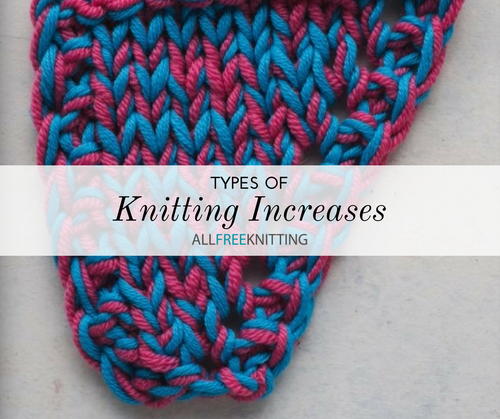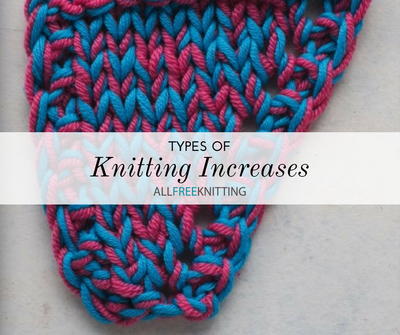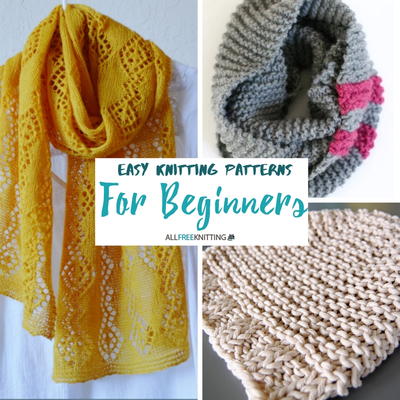6 Types of Knitting Increases
From the decorative yarn over to the discreet M1, these knitting increases will come in handy for almost any knitting project!

The first step in going from beginner knitter to sweater-making master is leaning the various increases and decreases in knitting. These are essential skills that might seem difficult at first, but they're actually very easy to pick up.
Increases help you shape your knitting, which makes them essential for basically any knitted item that isn't a scarf or a dishcloth. Knitted sweaters and shawls, in particular, use increases for shaping purposes. But no two increases are exactly alike. All of them have a particular lean. Some are single increases, some are double. And many have a paired increase that leans the other way but has a similar appearance on the fabric.
While many older knitting patterns will often just tell you to "increase 1" without specifying the specific increase that you should do, it's vital that you pay attention when they do specify the type of increase. Some are invisible, like the M1 increase, whereas others, like the yarn over are very visible and decorative. Below are tutorials for the most popular increases in knitting as well as some information about how and when to use each one.
Right-Leaning vs. Left-Leaning Increases
All single increases and most double increases have a lean to them. In knitting, the "lean" simply refers to which side of your original stitch the increased stitch will appear on. This is true for decreases in knitting as well!
Likewise, you might have heard that increases and decreases in knitting are paired together -- all right-leaning increases have a left-leaning counterpart. However, it can sometimes be hard to remember which increases lean in which direction. There is a handy trick for determining the direction your increase will lean:
Pro Tip:
To determine if a stitch is left-leaning or right-leaning, all you have to do is look at the direction that your working needle is pointing when you start working that stitch.
For example, with the M1L increase, your working needle should be pointing to the left of your work; that indicates that the increased stitch will appear on the left of the stitch used to create the increase. The opposite is true for right-leaning increases like the M1R
Yarn Over (YO)
Lean: Left-leaning on RS, right-leaning on WS
Single or Double: Single
Difficulty: Easy
Notes: Yarn overs are probably the easiest increases to work in knitting; however, because the yarn over is essentially the absence of a stitch, you will get a small hole in your work where the yarn over is placed. This is often used intentionally as a design element in lace knitting.
Make 1 Left (M1L)
Lean: Left
Single or Double: Single
Difficulty: Easy
Notes: Sometimes simply called a M1 (make 1), this increase is so easy to work. It's often considered the most "basic" increase in knitting (along with M1R below and YO above). However, unlike the yarn over, M1L and M1R are invisible increases.
Make 1 Right (M1R)
Lean: Right
Single or Double: Single
Difficulty: Easy
Notes: The M1R, often paired with the M1L shown above, is great for beginners. If you come across an older knitting pattern that simply says "increase 1" or "inc1" but doesn't specify which increase you should do, it's a safe bet that you should do one of the M1 increases.
Knit Front Back (KFB)
Lean: Left
Single or Double: Single
Difficulty: Intermediate
Notes: The KFB, sometimes called a bar increase, is an increase that works by working the same stitch twice -- once through the front and once through the back -- before sweeping the old stitch off of the needle.
Purl Front Back (PFB)
Lean: Right
Single or Double: Single
Difficulty: Intermediate
Notes: Similar to the KFB, the PFB works by knitting into the same stitch two times. This is essentially the same increase as the KFB, but it's right-leaning and is worked from the wrong side on the fabric.
Central Double Increase (CDI or INCTO3)
Lean: Centered
Single or Double: Double
Difficulty: Advanced
Notes: While not a great increase for beginners, this increases is easier than it appears. This is a double increase, so you'll go from 1 to 3 stitches in one maneuver. You'll probably come across a CDI in lace knitting, especially shawls.
Read NextRoositud Knitting
















